Modular synths look intimidating. They’re full of knobs, blinking LEDs, and colorful, crisscrossing wires; at first blush, a modular system doesn’t seem terribly inviting or intuitive. While it is true that their circuitry is complex and there’s a bit of a learning curve when using them to compose music, modular synths are quite simple at their core.
“What we’re doing is sculpting the electricity that comes out of the wall,” explains producer Gareth Jones. “It’s like taking a block of raw stone and chiseling away at it.” Other artists, like composer and engineer Arushi Jain, see it as a conversation: “The more time you spend with the patch [and] the modules specifically, the more you understand their behaviors, their characteristics, their freak tendencies.”
When I explain my modular rig to a curious stranger, referring to it as a "brain" seems to resonate the most. I tell them that each module has a specific function — some generate signals, some add or remove frequencies, some are effects like delay or reverb — and that each patch point acts as a synapse. The patch cables transmit electricity and tell certain processes to initiate. Usually, they nod. “Oh, okay, that makes sense,” they’ll say. But every so often, after a slight pause, someone will inevitably ask, “So, where do you plug in the guitar?”
That’s actually a fair and important question. There’s a view that modular synths are all-in-one music machines, and to a certain extent, that’s true. Ambient artists like Dream Chambers and Jogging House have primarily modular setups. Hip hop producers like JWords, Ski Beatz, and Timbaland use modular synths to make beats. Synthesists like Glia and Floating Points have brought modular synths into the jazz (or jazz-adjacent) realm. Hiro Kone and Caterina Barbieri use modular synths to create mind-bending compositions that incorporate elements of techno, kosmische, and minimalism. A modular synthesist doesn’t necessarily need to interact with other hardware to make fully fleshed-out compositions.
What’s less talked about, but could perhaps make modular synths a bit more accessible, is the ability to modulate sounds that don’t originate within the instrument itself. Many keyboard synths have audio inputs used to process external signals: listen to Annette Peacock’s 1972 album I’m The One to hear Moog-treated vocals, or Tarotplane’s The Feedback Sutras to learn what guitar sounds like when filtered through a Korg MS-20.
The Eurorack world, however, has greatly expanded the idea of processing outside sounds. I talked to several artists and producers about their use of modular synths for external signal processing when composing, producing, or mixing.
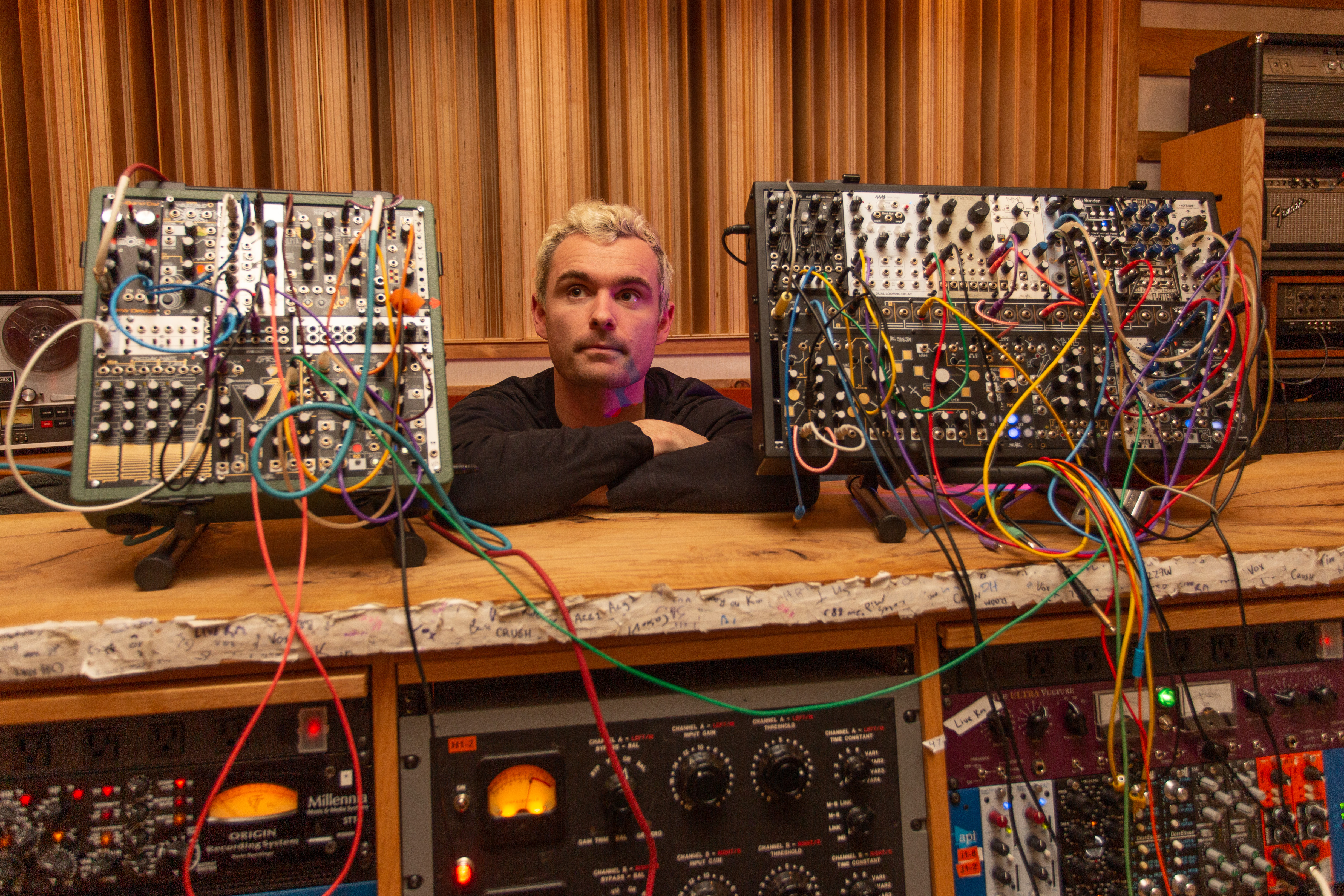
Adam McDaniel’s journey into modular synth processing began with an error message. Pro Tools shut down on him during a session, declaring that his “automation was too dense for playback.” He tells me this with a sly laugh, adding “Damn, that’s pretty sick.” McDaniel’s no stranger to outboard gear, being one of the founders and producer/engineers at Drop of Sun, a recording studio in Asheville, North Carolina.
Still, he needed a solution to his automation problem that could be shaped in real time. After switching to a modular system for effects processing, McDaniel found the dynamic possibilities drastically expanded. “It’s like an exploded [Eventide] H3000,” he says. ”All the automatable parameters are right there for you to touch.”
McDaniel first learned of modular synthesis by attending a talk given by Make Noise founder Tony Rolando. Rolando was explaining MATHS, an analog computing module. McDaniel describes the talk as equally confusing and intriguing, opening him up to a “whole new world of imagination.” Now, armed with more experience and theoretical knowledge, McDaniel credits the world of modular synths with keeping sessions spontaneous and exciting, leading artists into sounds they didn’t know were possible.
The Make Noise Erbe-Verb is one of his particular favorites, having become a go-to module for vocal effects. He likes to use it for ducking, as its “Decay” and “Absorb” parameters can be programmed via control voltage to create lush bursts of reverb. He also uses the MӦG D-2 distortion module from DPW Design to introduce skeptical guitarists to the world of synths.
According to McDaniel, destruction is one of the most crucial parts of his process. “I unplug everything [after] every song,” he says. “I don’t remember my patches on purpose.” McDaniel wants to keep his eyes fresh for every client. By starting with a blank slate, each session becomes fully collaborative, leading him and the artist into new sonic territory.
When Meg Mulhearn first learned about modular synthesis, her thoughts immediately went to the violin, her primary instrument since age 8. “I wanted [them] to be friends,” she tells me with a chuckle. “It occurred to me [right away], but I needed to get some synthesis under my belt.” She then began studying how synths work, first learning the semi-modular Make Noise 0-Coast before building a fully modular system.
Mulhearn ran the shipping department at Make Noise for several years, but also made 0-Coast demo videos for the company and ran workshops teaching synthesis basics. After developing a strong workflow with the modular, Mulhearn began integrating the violin, using modules like the Morphagene and Mimeophon to uncover qualities of the instrument she’d never heard before.
On the North Carolina musician’s most recent albums, Breath is a Wave and Conjunctions (a split with Nashville’s Belly Full of Stars), Mulhearn blows the violin apart. Her compositions are heavy and layered, influenced by years of playing in metal bands like U.S. Christmas and Descolada. Looping rhythms fold into themselves while drones hover like a thick fog.
“Balance Wheel,” a glitchy highlight from her side of Conjunctions, features a plucked violin looping in the Morphagene. It then goes through the Mimeophon’s cascading stereo delay. By changing the resonance on the Mimeophon’s “Color” parameter, Mulhearn found she could accentuate the scratchiness produced by her fingers when plucking the strings, giving the loop a shimmer of soft distortion.
When playing live, she’ll often use similar Morphagene reels to trigger gates in the 4MS Percussion Interface, which she sends across the system to set off other events. She likes to create a “complete loop where the violin [is] the source of the changes [while] being processed by the synth.”
Mulhearn asserts that using the modular synth — especially in tandem with the violin — “rewired her brain.” The ease with which the modular can facilitate change mirrors existence itself; “everything is mutable,” she says. Both life and synthesis consist of cycles that we learn to interrupt, modulate, or leave be.
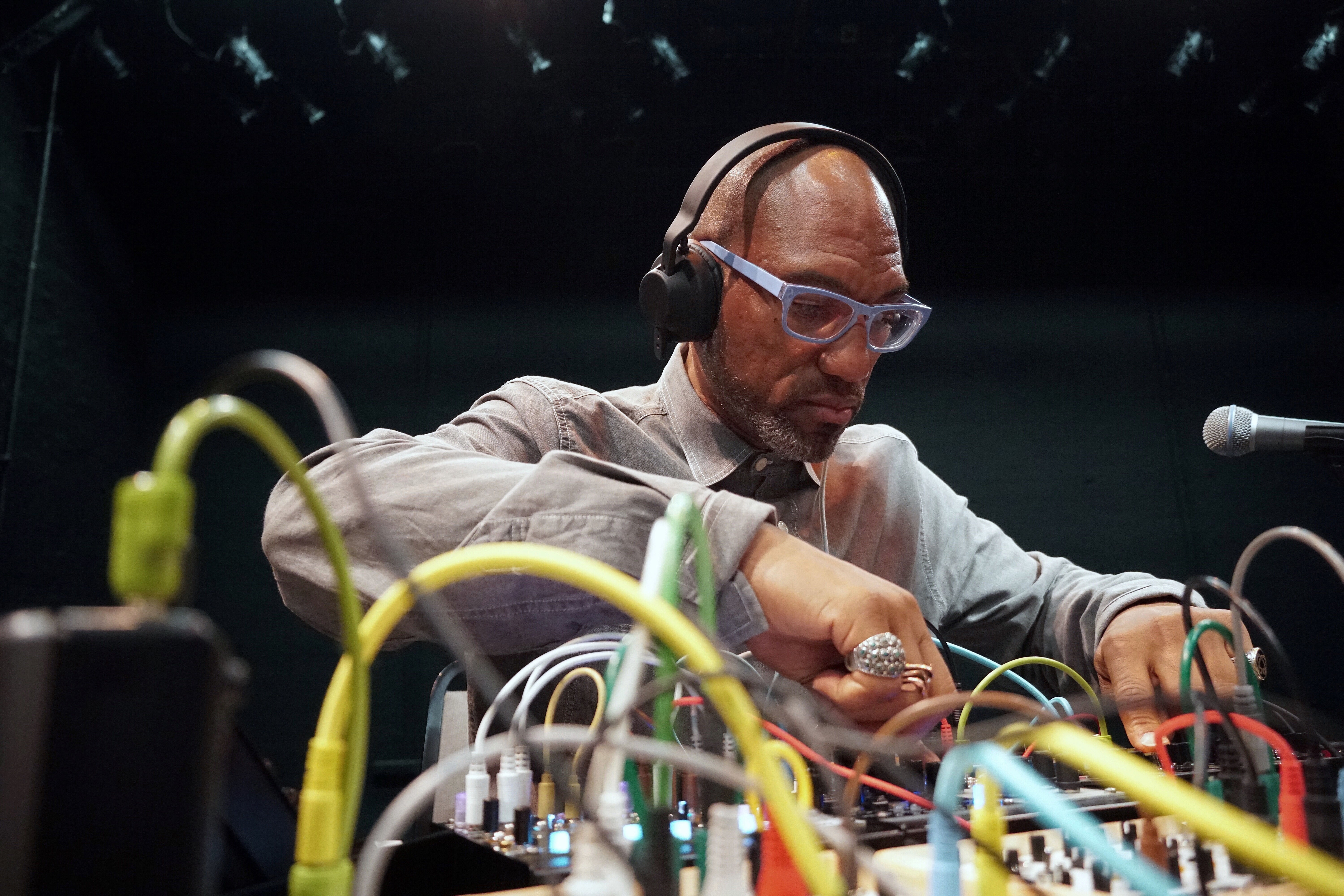
It’s near impossible to talk about the past thirty-odd years of electronic music without mentioning King Britt. In the late 80s and early 90s, King helped shape the Philadelphia electronic scene. Along with Dozia Blakely, he created the Back2Basics night at Silk City while working as the vinyl dance music buyer at Tower Records. Ishmael Butler asked Britt to join Digable Planets as their DJ, and he spent two and a half years with them on the road. He’s collaborated with De La Soul, Madlib, Gonjasufi, and Tyshawn Sorey, remixed songs by Solange and Meredith Monk, and played festivals like AfroPunk, Moogfest, and Le Guess Who. Britt now teaches Blacktronika: Afrofuturism In Electronic Music, a lecture course he designed for the University of San Diego’s Computer Music program. The course honors the contributions and innovations to electronic music from Black people and other people of color.
Britt is also a master synthesist with a massive keyboard synths and modules collection. He’s especially fond of creating small modular systems with the 4ms Pods cases for specific sonic tasks. “I can limit myself to certain effects or processing specific to certain tasks without being seduced by other modules,” he explains. “For instance, I have Mannequins Just Friends and Clouds together for signal processing.” Lately, he’s been using the Make Noise Tape & Microsound Music Machine, a skiff system that features the company’s Wogglebug, MATHS, Morphagene, QPAS, Mimeophon, and XOH modules, to process nature recordings into “otherwordly [rhythmic] sounds.”
Once he finds the sounds he wants to treat, he takes them through a multi-step sampling process. First, he loads the sounds into the Morphagene and cuts them into the splices he wants to effect. Next, he decides how to trigger the splices. Sometimes, he sends an LFO from Ableton tools into the module. Other times, he uses a Boss DR-110’s Accent Trigger output to send rhythmic gate signals to sequence the splices. He can “creatively alter said splices” with the system’s QPAS filter and Mimephon echo while recording the performance into Ableton to save for future use.
For Britt, the joy of synthesis in the fleeting moments of discovery. He creates some patches to be repeated; on those, he’ll take copious notes. But for the most part, he’ll record as much as he can with one patch, wringing out every drop of creative possibility, then tear it down and forget about it.
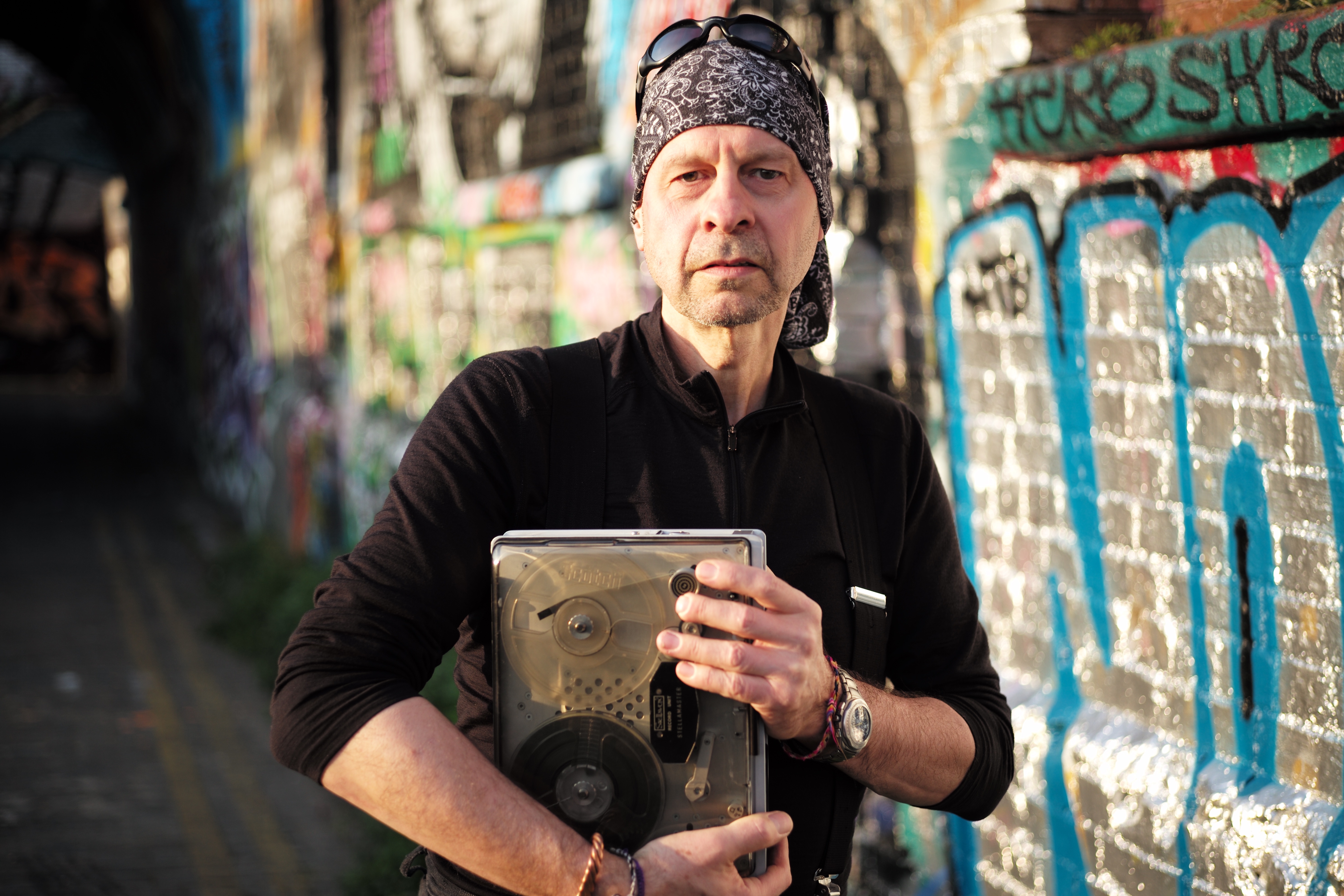
The 1980s wouldn’t sound the way they did without Gareth Jones. The producer began his musical journey by experimenting with tape loops and edits. He later trained at the BBC and quickly began working at Pathway Studios in North London. There, he recorded early singles from Madness and John Foxx before decamping to Berlin to work at Hansa Tonstudio. Eventually, his work caught the ears of Depeche Mode, for whom he’d go on to produce five records. Jones was a major force in New Wave and Industrial music, working with legendary bands like Einstürzende Neubauten, Erasure, and Wire.
He had experience using the modular synthesizers of the 70s and 80s — the massive circuit boxes with quarter-inch jacks that looked like weaponry — so when what he calls the “Eurorack revolution” came about over a decade ago, he was very intrigued. Unsure about where to start with Eurorack, he regularly visited Schneidersladen, the famed synth shop in Berlin, with cash in hand. “At the time, most of my income was from mixing records,” he says. “I figured I could justify the expense if I bought modules to use for mixing.”
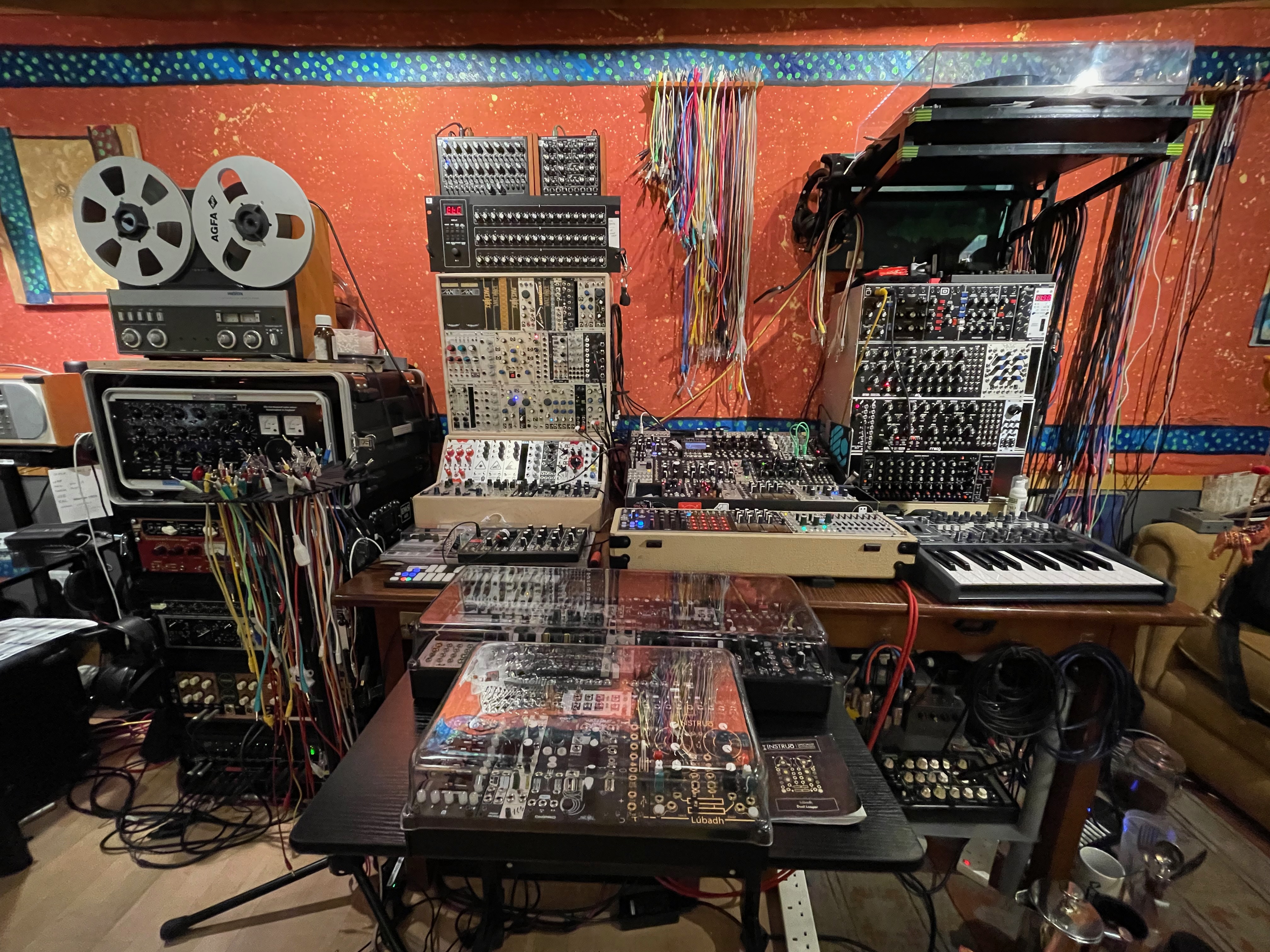
The first module he settled on was the Make Noise Echophon, which drew him in thanks to its “unique echo character and color.” As he expanded his Eurorack mixing setup, he included modules like Mutable Instruments’ Clouds, a granular synthesizer, and the TouellSkouarn Ar Merc'het Brao, a dual filter overdrive. When patched together in a mixing chain, the two create “massive harmonic colors.”
As an early adopter of samplers, Jones is excited about Eurorack’s sampling capabilities. To explore these possibilities, he’s assembled a sampler-specific system featuring modules like the Morphagene, the 2hp Looper, and the Bitbox Micro. In Sunroof, his duo with Mute Records founder Daniel Miller, Jones uses his sampling rig to manipulate the output from Miller’s system into new textures and rhythmic shapes. For Jones, the modular synth is all about “openness,” a willingness to follow the sounds and let the machine lead you to “unexpected destinations.”
Though primarily known for country music, Nashville, Tennessee has a small but thriving ambient scene. Kim Rueger is one of its linchpins. She records solo material as Belly Full of Stars and plays piano in the Nashville Ambient Ensemble, a Music City supergroup that includes pedal steel guitarist Luke Schneider and violinist Alicia Enstrom. Reuger’s delicate and enveloping music often sounds as if it’s wafting in from a nearby room, settling gently like a fine mist.
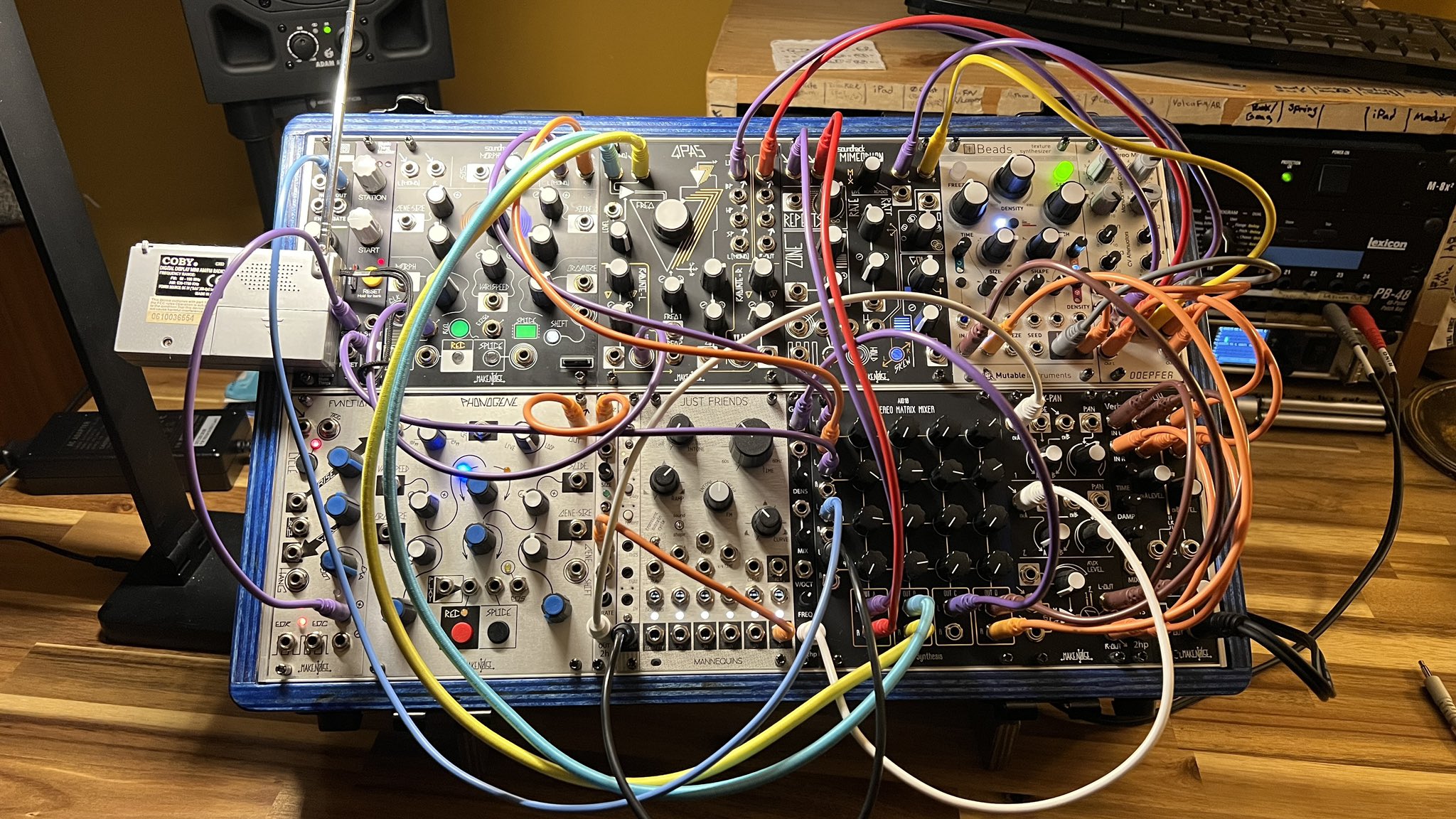
When she first started playing live shows, Rueger sang vocal harmonies into the Borderlands Granular iPad app and ran field recordings through various guitar pedals. She supplemented these textural passages with a Volca FM synth. Eventually, Rueger became interested in modular synthesis to expand her processing capabilities. She built a system based around both the Morphagene and Phonogene, the combination of which she now calls the “heart of what she does.”
Rueger’s first foray into using modular processing as a composition tool came from a 2019 commission from the London-based 20x20 Project. It tasked 20 artists with making an album 20 tracks long, each song lasting exactly 20 seconds. To create the pieces for her entry, blue is the color of my true love’s light, Rueger populated a small skiff with her Morphagene, a Delta Sound Labs Saber Filter, a Music Thing Modular Radio Music, a Make Noise Function, and a 2hp Grains. She composed a piano piece that was 20 seconds long, slicing each second into a new sample with the Morphagene. She stretched, warped, and filtered these tiny samples into oscillating drones or sputtering, pitch-shifted loops.
Though she frequently uses the piano as her main sound source (Rueger tells me she didn’t have an oscillator in her system for years), she’s created pieces from recordings of wind chimes, street noise, and the sound of an ice cube swirling in a glass. “It can be anything goes,” she says. For Reuger, composing with the modular synth is about letting the process direct itself, allowing the sounds to determine where they want to go.
Bill Pettaway’s work has profoundly impacted the pop music landscape for over 40 years. The Maryland-born, Miami-based multi-hyphenate lives in service to his creativity, always searching for a new source of inspiration. His musical journey feels near mythic in proportion: he’s won a Grammy as a songwriter, discovered Toni Braxton, and been Timabland’s go-to session musician for decades, playing guitar on songs by Missy Elliott, Justin Timberlake, Ginuwine, and Jay-Z. He’s also a modular synthesist and has released music on Robert A. A. Lowe’s Aventures, Ltd. imprint.
When Pettaway first learned of modular synths, he had been looking for “something so raw that it could be anything.” He didn’t understand how to approach a modular system at first but felt called to keep exploring. “It didn’t make any sense,” he muses, “but I got deep into it.” He learned how to put together sequences and modulate them with other circuits. The Morphagene broke it wide for him, bridging the gap between instrument and processing unit. “I may use it as a looper, I may use it as a delay,” he says. Often, he’ll use the Morphagene to pitch shift a singer’s voice and send that processed vocal into a vocoder.
However, beyond any specific module, Pettaway says the most critical parts of signal processing are having a synchronized clock and being present in the moment. “What a clock allows you to do is go back with a different modular system or instrument, rethink it, tune it, and incorporate it into the processing chain,” he says. To stay open to whatever inspiration may come, Pettaway does his best to avoid using his synth the same way twice. He always shows up to a session with an unpatched system and unplugs all cables after recording. “It’s all about the moment,” he declares. “That’s what makes something unique.”
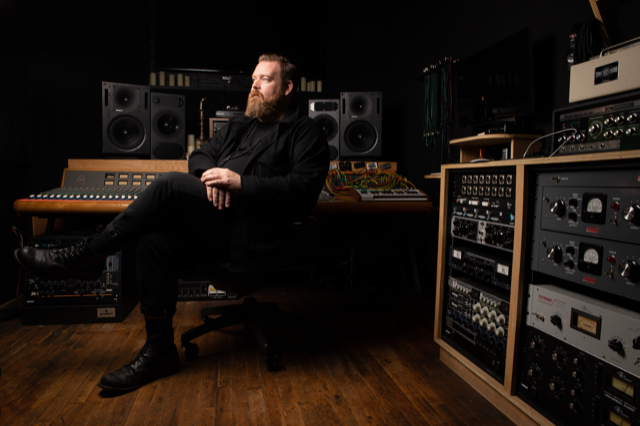
Modern heavy and experimental music wouldn’t sound the way it does without Randall Dunn. He’s produced records for Sunn O))), Earth, Midday Veil, and Marissa Nadler, made collaborative albums with Oren Ambarchi and Lesli Dalaba, and recorded as a member of Master Musicians of Bukkake. He worked extensively with Jóhann Jóhannsson on his Mandy soundtrack and produced and engineered modular synth legend Robert A.A. Lowe’s score for Candyman. His CV is deep and impressive.
He’d been playing synthesizers for years, but it wasn’t until a session musician showed him how to run the sound of a drum kit through a Minimoog that he started using them as processing tools. Dunn began integrating an array of hardware synths into his mixing practice but became increasingly enchanted by the Eurorack world as it developed.
“What’s cool about [Eurorack],” he says, “is that if you build a useful system, you can clock it to Pro Tools. If your song is in a particular click — and even if it’s not — you can start to think up multitudes of modulation, effects, and automation within the context of a mix.” He started with a Mutable Clouds before expanding his rack significantly, gravitating especially to various delay modules. Recently, he’s integrated the Make Noise Mimeophon into his production palette, using it to sequence “weird, almost gated reverbs” on vocals. In many cases, he wants to add a hallucinatory, slightly inhuman character to an artist’s voice while retaining its organic quality. “Like a complex, modulated shadow,” he says, “It’s like how gasoline looks when it’s floating on water.”
Though Dunn emphasizes the importance of chance in production, he doesn’t necessarily view modular synths as the untamed circuitry of infinite possibility. For him, synthesis is also about precision, a utility belt full of tools used to achieve a particular sonic outcome. “It’s interesting because none of this is new,” he says. “For me, a lot of this is based on dub, like King Tubby making a step-sequenced EQ.” He adds that no matter the tools used, it all comes back to gain structure and signal flow, figuring out how to let every element have its own sonic space.
Animal Collective was already 15 years into their career before Brian Weitz, also known as Geologist, started experimenting with modular synths. Noah Lennox (Panda Bear) had integrated a few JoMoX drum modules into his setup, and Weitz found himself fascinated and intimidated by modular synthesis. While the band was at Drop of Sun in Asheville, rehearsing the material that would become 2016’s Painting With, Adam McDaniel brought them to the Make Noise headquarters just down the road. Weitz got a demo of the Shared System, the instrument that combines all of Make Noise’s synthesis techniques, and he felt especially drawn to the Phonogene. Complex samplers, like the Elektron Octatrack, featured too much menu diving for Weitz. The Phonogene struck him as an accessible sampling unit, allowing him to experiment and collage.
Shortly after Painting With, VICE asked Weitz and Dave Portner (Avey Tare) to participate in the network’s Earthworks documentary series. The musicians explored the Amazon, capturing the sounds of the rainforest with their modular rigs, looping, chopping, and highlighting textures with their Phonogenes. Those processed field recordings became the bed for the slowly unfurling psych-folk of the Meeting of the Waters EP.
Though he’s kept his Phonogene, Weitz recently upgraded to the Morphagene and has been getting deeper into its processing capabilities. He’s been working on a record using samples of a close friend playing acoustic guitar, chopping out particular musical phrases and tweaking them until “the source material is unrecognizable.”
On a few pieces, Weitz uses a tiny, one-second sample of a plucked string, sequencing the Morphagene’s Varispeed input with his Rene to create what “would almost sound like a [guitarist] playing a lick.” For Weitz, using the modular has led him down a path of spiritual discovery — an understanding that a sound is merely a snapshot of a moment, the boundaries of which can be explored, pushed, and completely reshaped.
After Sylvan Esso’s first album began to blow up, Nick Sanborn felt pulled in a nebulous new sonic direction. The setup he’d used to produce the skittering electro-pop backdrops for Amelia Meath’s warm vocals was simple: A laptop loaded with Ableton, a MIDI controller, a Roland Juno-6, and a Moog Minitaur. Eurorack modular synths were gaining prominence, and Sanborn wondered how a modular system could expand his compositional vocabulary.
He was most excited about the Make Noise Phonogene’s “left-field sampling” possibilities. Meath encouraged Sanborn to put a modular rack together, and he built a small system around the Phonogene, supplementing it with a Make Noise Wogglebug and both a Cold Mac and Just Friends by Mannequins.
His entry into the modular realm was immediately fruitful: “Right away I got a bunch of things that led to songs on [What Now]. Phonogene is all over that record.” When citing examples, he points to the intro of “Die Young,” a moving rumination about love and death that’s become one of the duo’s biggest songs. The track opens with a stuttering melodic loop sampled from Meath’s voice, cut up and repitched by the Phonogene.
Since then, Sanborn’s expanded his modular system, upgraded from a Phonogene to a Morphagene, and added Mutable Instruments’ Beads — his current favorite module. The modular synth is now his primary method of composition. When writing Sylvan’s latest record, No Rules Sandy, Sanborn and Meath would jam specifically to find moments to sample, using the Morphagene and Rabid Elephant Natural Gate to turn bits of guitar or vocals into pads and percussive sounds.
Sanborn credits modular synths for changing his relationship with inspiration. “It unlocked a new way of thinking about it for me,” he says, explaining that his modular allows him to “just start” rather than waiting to be inspired. Rather than approaching the synth with a set idea, Sanborn begins with a question: “What do you have around you? What sounds cool? How can we change it? Then you answer that question for yourself and move from there.” The process is different each time, which is part of the joy. “If I had a specific idea of what I wanted, I wouldn’t use modular,” he says.
